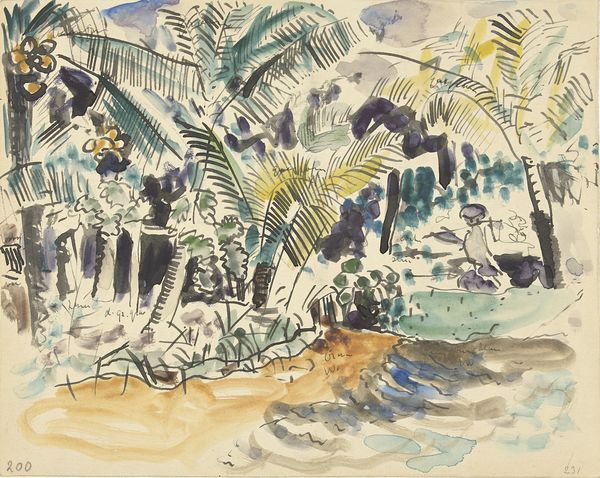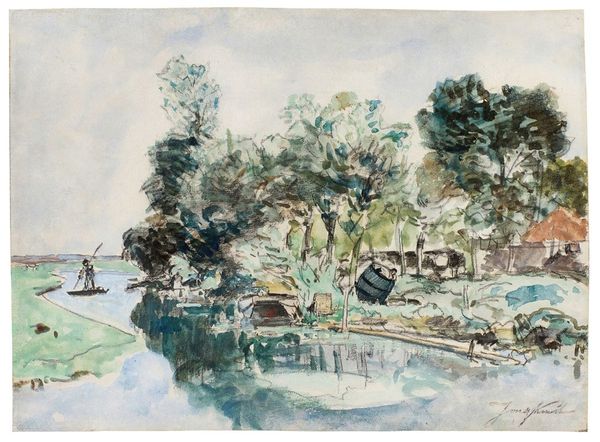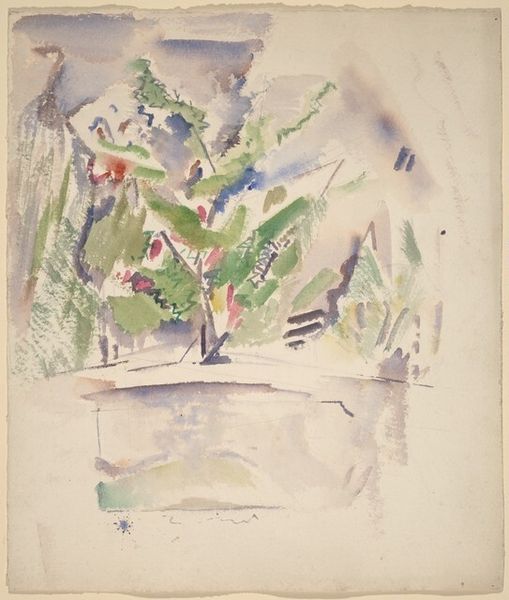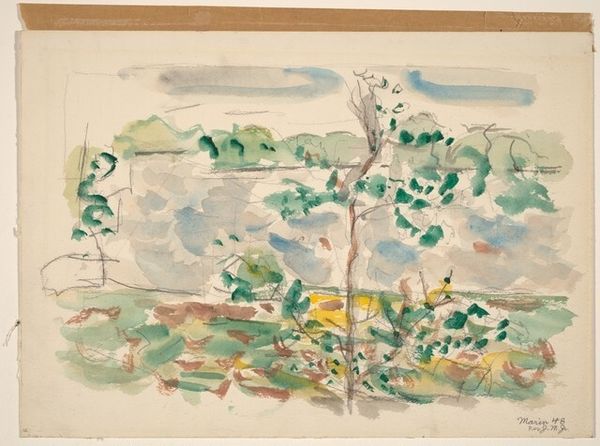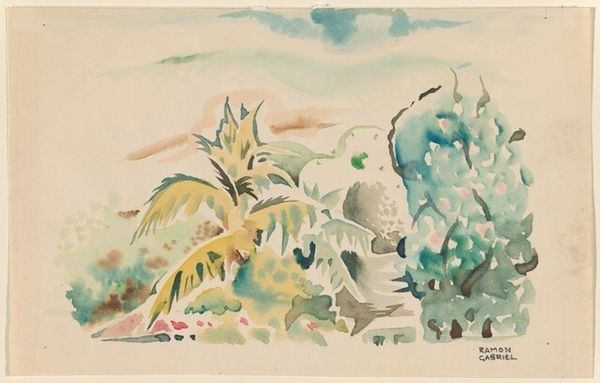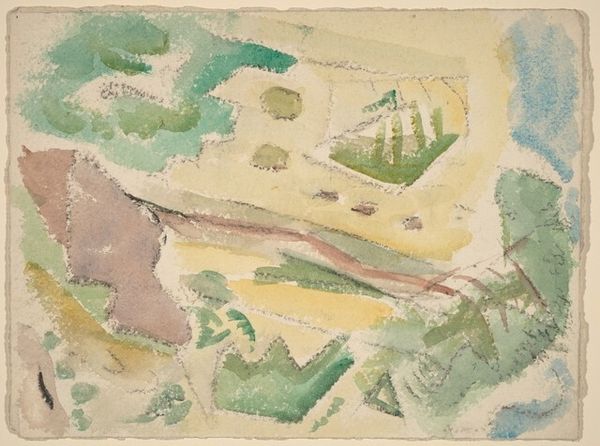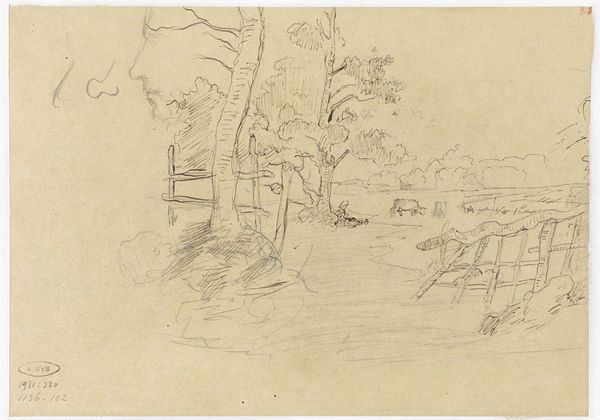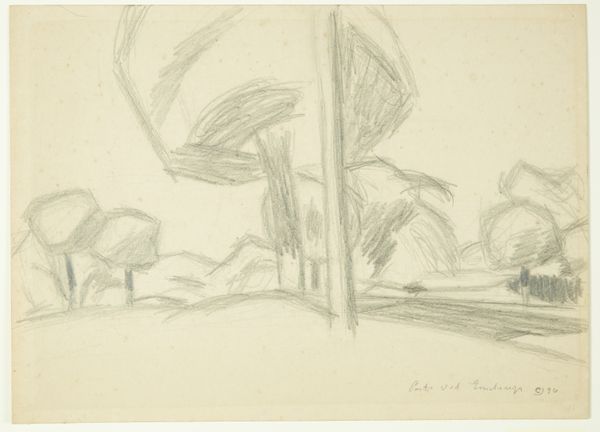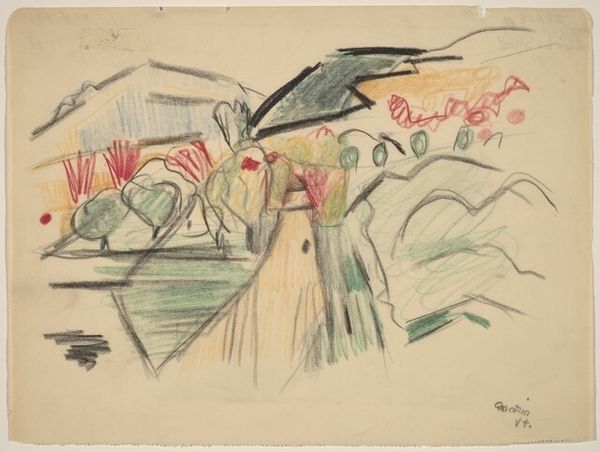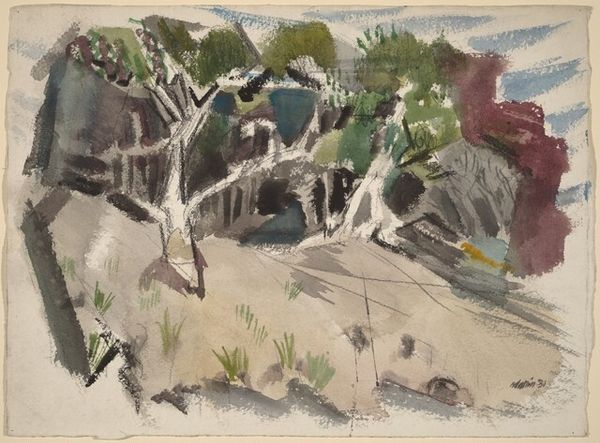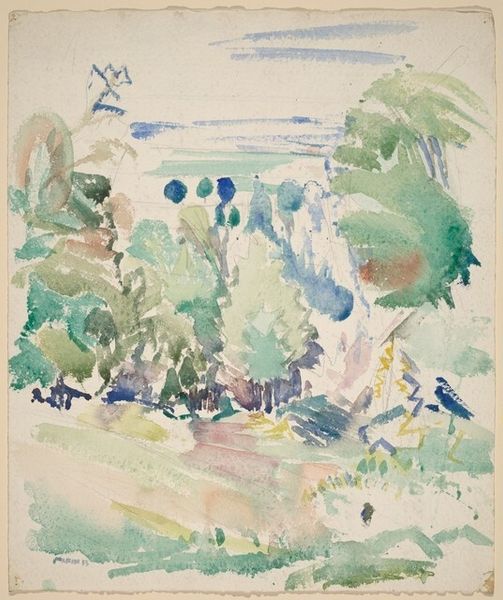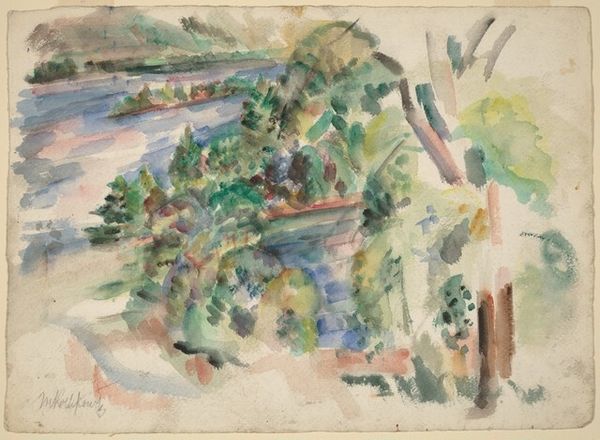
Dimensions: height 195 mm, width 243 mm
Copyright: Rijks Museum: Open Domain
Editor: We’re looking at Pierre Jean Apol's "Palmen bij het water," made sometime between 1886 and 1947. It's a watercolor and drawing in the style of Impressionism. What strikes me is the abstraction. It's almost like a quick sketch, capturing the essence of a tropical scene, but in a very loose, unfinished way. What do you see in this piece, focusing on the formal elements? Curator: The dynamism lies precisely in its unfinished quality. Note the juxtaposition of distinct, deliberate lines against areas of diffused watercolor washes. This contrast establishes a spatial tension; foreground and background become ambiguous, flattened. Editor: Ambiguous in what way? Curator: Consider how the reflection in the water isn't merely a mirrored image, but a continuation of abstract marks and lines that pull our eye in different directions. Apol is playing with our perception. The drawing invites the viewer to participate in completing the composition, thereby challenging conventional representation. Editor: I see what you mean. The limited color palette – primarily greens and browns – adds to that flattened effect you described. It almost neutralizes the scene. Is that intentional? Curator: It emphasizes form and texture over realism. Notice how the artist repeats the motif of the palm fronds throughout the composition. They are not rendered naturalistically, but rather as formal elements creating rhythm across the surface. Do you observe any other instances of repetition? Editor: Yes, the vertical lines in the reflection echo the palm trunks. It really does create this rhythm that leads your eye around the artwork. Curator: Exactly. The tension arises from the relationship between organic forms and abstract marks, dissolving conventional perspective. Editor: It's amazing how much you can see by just looking at the lines and shapes. Thanks! Curator: Indeed. Apol uses what might seem like a fleeting sketch to create a space that’s both evocative and deeply considered in its formal arrangement.
Comments
No comments
Be the first to comment and join the conversation on the ultimate creative platform.
